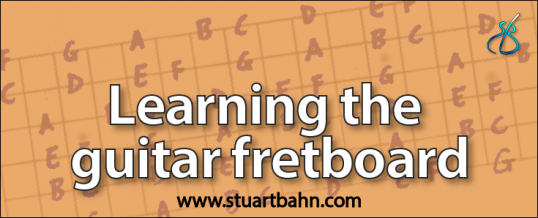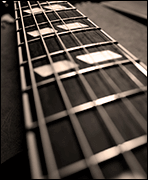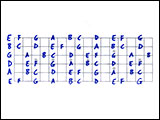
How well do you really know the guitar fretboard?
With the exception of classical guitarists, most guitarists start by learning open chords. These are learned as shapes with fairly meaningless names such as C, Am, G7, etc (see ‘Why learn music theory?‘ for more on this).
There is no immediate reason to set about fully learning the guitar fretboard, so no one does.
Why learn the guitar fretboard?
 It’s usually when we first learn to use bar chords that learning the notes on the fretboard becomes important, on the E & A string at least. Even then, many aspiring guitarists learn the notes on these strings very gradually on a ‘need-to-know’ basis.
It’s usually when we first learn to use bar chords that learning the notes on the fretboard becomes important, on the E & A string at least. Even then, many aspiring guitarists learn the notes on these strings very gradually on a ‘need-to-know’ basis.
This results in unnecessarily slow progress in learning to ‘see’ the notes on the fretboard and many unnecessary mistakes as chord locations are, at least partially, guessed at. Sooner or later almost everyone learns the locations of the notes along these two strings, but many people fall short of learning the notes on the remaining strings.
This is a great shame. Whilst it may not be absolutely essential to learn where all the notes lie on the fretboard, it only takes a handful of hours to do and it is very very useful!
All you need to know is:
- The names of the guitar strings: EADGBE (thick to thin)
- That moving from note B to C is one fret
- That moving from note E to F is one fret
- That all the other ‘letters’ are two frets apart: A to B, C to D, D to E, F to G, G to A.
That’s it.
 Learning the guitar fretboard: my suggestion
Learning the guitar fretboard: my suggestion
Start with the name of a string and count along the frets using the above information until you get to the required note.
If you are looking for a sharp or flat, follow the same approach and just raise or lower the appropriate note when you get to it.
For example, to find a Gb on the D-string you would count “D to E is 2 frets, E to F is 1 fret, F to G is 2 frets, back one fret is Gb”.
That’s the method. Now all you need to do is test yourself repeatedly.
A demonstration of how to learn the guitar fretboard
Watch the video below for a practical demonstration of how to learn the guitar fretboard – and be sure to subscribe to my channel if you’d like more free guitar tuition videos:
Using a guitar fretboard app
If you like apps then you buy my little Android app ‘Guitar Fretboard Trainer’. I developed it specifically to encourage more guitarists to learn the fretboard. You can get it from Amazon and Google Play and you can see a demonstration video on how to use it here.
Using pen and paper
If you don’t have an Android device, take a piece of paper and write all 12 notes in a mixed up order such as: Bb G Eb C Ab E B Db F A D Gb.
Then find each of these notes in turn on each of the six strings. As soon as you can manage it, put on a metronome and give yourself say four beats of time in which to find each note. This adds a little pressure to get you to think quickly.
When you have mastered this, then give yourself just two beats of time – even more pressure. You can keep reducing the time you allow yourself until you know the fretboard like the back of your hand.
A second approach to learning the guitar fretboard
The below is part 2 of my two-part series on how to learn the guitar fretboard. In it we take the opposite approach to part 1. We work our way up the fretboard naming notes as we got instead of finding notes:
This and the first approach together form a comprehensive way of learning the guitar fretboard quickly and efficiently. I highly recommend using both approaches.
If you find these videos helpful, do please click through to Youtube and give them a thumbs up. And if you’d like more of my free videos be sure to subscribe.
Why wouldn’t you learn the guitar fretboard?
Learning the guitar fretboard takes so little time compared to many other more daunting aspects of guitar playing yet it is so often overlooked. Learning the guitar fretboard in this way makes the whole guitar neck a more friendly and familiar terrain.
No longer will there be unknown areas of the fretboard. You will ‘see’ arpeggios, scales and chord fragments better than before and, with this gift of greater vision, you will be a better guitarist – guaranteed.
If you liked this article on learning the guitar fretboard please share it with others.
photo credit: BottleLeaf via photopin cc
APR
2013

About the Author:
Stuart Bahn is a professional guitarist and guitar educator in London, England.